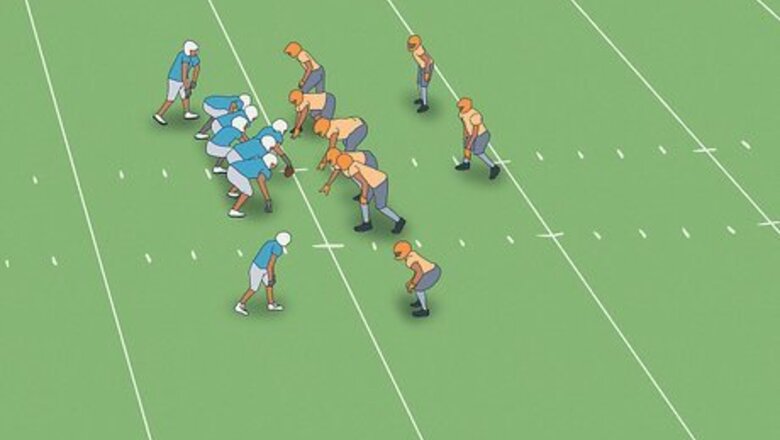
views
Learning Juking Basics
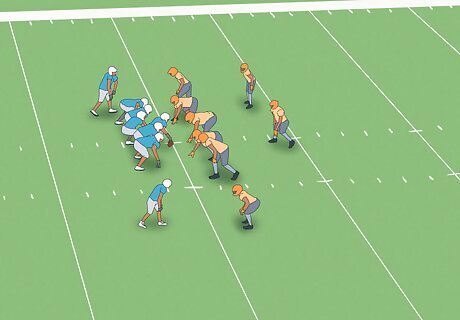
Read the field as you run with the ball. Juking is a skill that's usually used by people who have the football to avoid being tackled by defenders, so the first step to performing a good juke is to be aware of the defenders around you as make your way up the field. As soon as you begin running with the ball, make an effort to keep your head up and your eyes pointed down the field. Scan the field ahead of you for incoming defenders so that you have time to react before they're on top of you. No matter how agile you are, you won't be able to juke if you're laid out by a tackle you didn't see coming. Defenders won't always come from directly in front of you. To get an accurate idea of where defensive threats will come from, don't forget to give a few quick glances to your sides, as well.
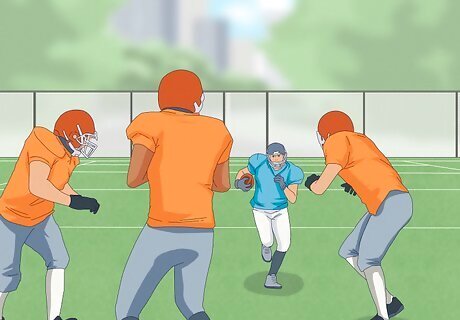
Pinpoint the defender(s) you'll encounter. To do a great juke, you'll need to single out the defender (or, sometimes, defenders) that are going to cause you problems. This requires making an on-the-fly judgement about which defenders downfield from you will be able to reach you before you run past them with the ball. The best way to build up this skill is simply to practice this situation — for instance, try running the ball past a few friends or teammates scattered downfield from you in mock drills. If it seems like none of the defenders will be able to make it to you, don't bother with a juke — instead, simply run past them, as this is much less risky and is likely to win you more yards. Don't underestimate the speed of your defenders. If you see a defender 20 yards (18.3 m) away, assuming both you and your defender are able to run the 40-yard dash in about 5 seconds (a reasonable speed both for professional and high school-level runners and defenders) and that you both run straight for each other, the defender can conceivably be on top of you in just over two seconds.
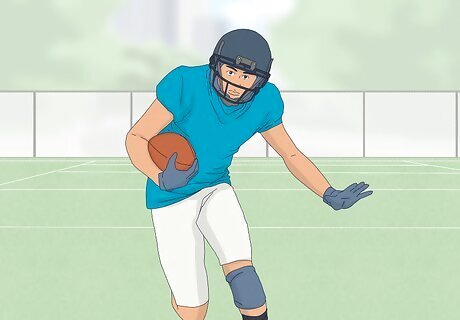
Signal that you may go either direction. As you draw near to a defender who is blocking your path (which, as noted above, can be in a matter of a just few seconds or less), use your body language to make it unclear which direction you'll attempt to go around him. Look at him and make a few small, quick ducking and weaving movements to your right and left using your head, shoulders, and torso to misdirect him. Don't commit too heavily to any of these movements before the actual juke, as this can slow you down, waste precious time, and ultimately make you easier to tackle. This sort of misdirection work takes time and can slow your forward motion, so if you're surrounded or you have defenders right on your tail, you'll probably want to skip it and attempt your juke straight away. When it comes to avoiding a tackle, even a split second of extra time can make a difference, so don't waste an opportunity to gain yards by trying for a fancy juke when it's not necessary.
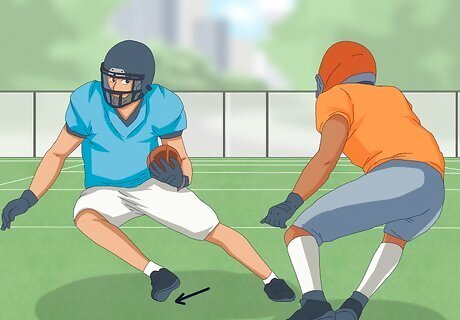
Fake one direction. As you get close to your defender, watch him — he should be attempting to read and match your movements as you duck and weave to either side. When he appears to be following your movements, pretend to commit to one direction. Take a quick step forward in that direction and shift your torso and hips in the same direction. The defender should "take the bait" by lunging or moving in the direction you're faking as he attempts to make contact with you. Don't lean too far in the direction you are juking, as this may result in falling or being slowed down. The success of your juke depends on your ability to transition from your "fake" move to the opposite direction of motion with lightning speed.
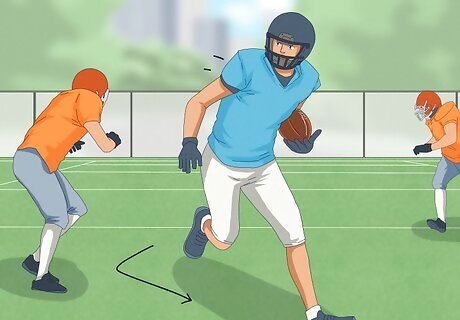
Quickly switch to the other direction and run. When your defender over-commits to blocking your motion in one direction, you want to blow around him in the opposite direction as quickly as you can so that he doesn't have the time to react and correct his mistake. Use your planted foot to push in the opposite direction and move diagonally forward and away from the direction your defender moved or lunged. As soon as you do this, start running as quickly as you can, as your defender will recognize his mistake as soon as you start to move around him and will likely be pushing as hard as he can to catch up to you. Don't forget to keep your head up and start scanning for more incoming defenders as soon as you get around the first one. Even if you've made it past the defensive linemen and linebackers, you still have defensive safeties to worry about, so stay vigilant.
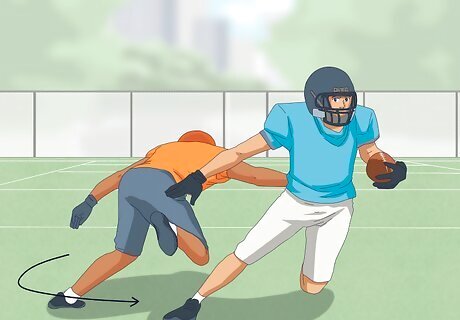
Move around your defender if he goes straight for you. When you start a juke by attempting to throw your defender off with quick ducks and weaves, you always run the risk that your defender won't "take the bait" and start following your movements and instead will head right for you. In this case, you'll need to react fast to avoid a major tackle. Pay attention to your defender as you approach him — if he shows no sign of slowing down to attempt to match your movements, pick a lateral direction (left or right) and commit to it immediately. Plant the foot on the side of your body opposite the direction you want to run and push hard to the side to propel yourself around him. Assuming a defender is heading directly towards you at maximum speed from downfield, moving as quickly as you can to either side will usually be hard for him to react to. Because he has a great deal of forward momentum, the amount of force he needs to slow down and change direction will be more than what you'll need to accelerate around him. As soon as you seem to be out of your defender's reach, start running up the field again. Always be aware of the positions of other defenders so that you can react to them as soon as possible.
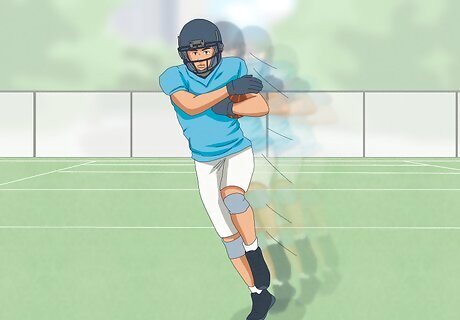
Don't waste time. With any sort of juking in football, time is of the essence. When you have the ball, the goal of the entire defensive team is to stop you from moving up the field, so don't expect any of the defenders to wait for you to complete a slow juke. Quick, effective jukes are always better than slower, flashier ones, so always keep your movements as short and economical as possible and be sure to run as hard as you can as soon as you get around your defender to avoid giving the defense any unnecessary opportunities to tackle you. One mistake beginners often make when trying to learn juking skills is devoting too much time to the rapid back-and-forth fake-out motions at the start of the juke. Though these can be great for throwing off the defender who's directly in front of you, every instant you spend doing these motions is an extra instant that defenders from your sides and behind you have to get close to you, so keep them short and sweet. Also do not move the ball away from your body. If it is not tucked in, you will fumble and may not be played again for a long time. Practice ball security to perfection when doing this.
Learning Juking Variations
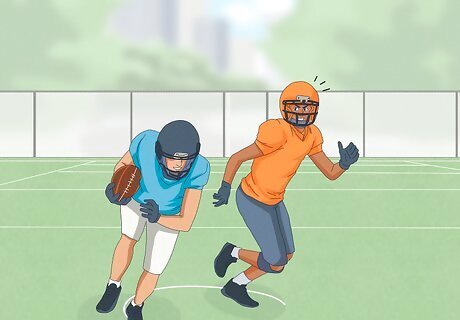
Try a spin move. One common addition that ball carriers make to the basic "fake one way, go the other way" juke is a quick spin. Spinning around a defender, rather than simply running around him, can make your intended direction of motion less obvious and can also make you trickier to grab hold of, making this move a good choice for when your defender is already too close for comfort. However, spinning can also disorient you, so it's extra important to take mental note of the defenders' positions before you do this move to avoid a surprise tackle during (or right after) your spin. To start a spin juke, approach your defender as you would for a normal "fake out" juke. As you start to fake your defender out, make a quick note of where the other defenders are. When you get your defender to over-commit to one direction, quickly push off to the other side while simultaneously turning a fast 360. Move diagonally around the defender as you spin and start sprinting upfield and scanning for defenders as soon as you're facing forward again.
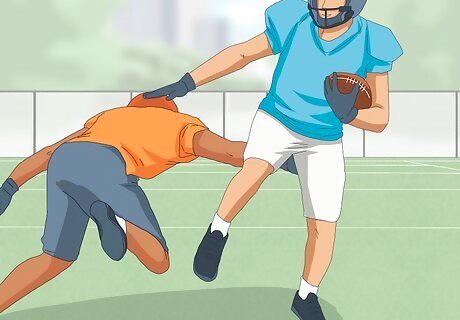
Try a stiff arm. What's more stereotypically "football" than a beefy ball carrier effortlessly batting troublesome defenders away with a powerful stiff arm? Stiff arms (sometimes called "stiff arm fends") are valuable tools for ball carriers looking to keep defenders at arm's length. The basic idea of a stiff arm is to use one arm to physically push the defender away and make a tackle difficult or impossible. With a well-placed stiff arm, a short gain can become a major play or even a touchdown, so frequent ball carriers are wise to learn this move. Note that in some minor leagues (especially youth leagues and flag leagues), stiff arms may be prohibited, so ask your coach before using one in a game. To perform a juke with a stiff arm, run upfield as you normally would until you encounter a defender. Begin a normal "fake out", then move around the defender (preferably so that the arm which isn't carrying the ball is on the same side as the defender). Extend your arm straight toward the defender with your palm upward and outstretched and use a pushing motion (not a striking motion) to keep the defender away or even knock him over. Deliver stiff arms to a defender's chest pad, his shoulder pads, or the top of his helmet (not his face mask). Don't grab any part of the opponent's gear when performing a stiff arm, especially his face mask, as this can be interpreted as a foul and earn you a penalty.
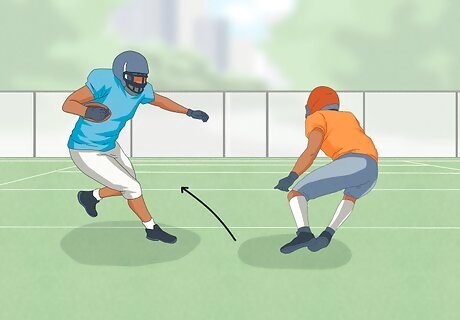
Try jumping backwards. The goal of many basic jukes is to get you around the defender and running upfield as quickly and efficiently as possible. However, expert ball handlers use every opening available to them, even when it means moving backward. If a defender lunges at you from head-on and you're able to react quickly enough, try quickly stepping or hopping backwards so that he loses his balance or falls forward. Once he's off-balance or on the ground, he should present no problem — simply run around him and continue upfield. To juke backwards, start by approaching your defender as you normally would. If he lunges directly at you and you have time to react, take a few quick steps (or jump) backward, making sure to keep out of his reach. As soon as he appears off-balance or starts falling over, take the opportunity to cut around him and run upfield. Be cautious about moving backwards when you have the ball. While some backward motion can be useful for evading tackles, ultimately, your goal is to move the ball up the field, so start running forward or to the side as soon as you get the chance to avoid losing yards. Also remember that defenders can come from behind you (especially if you've already gained substantial yards).
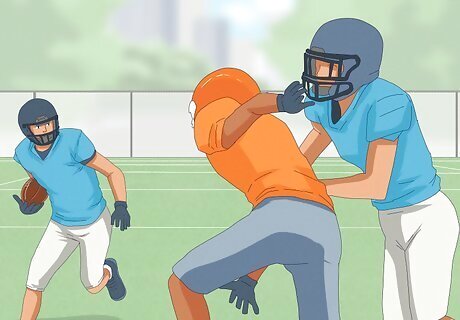
Use your blockers when available. It's important to remember that you're not alone when you're running the ball up the field. In fact, once you start running up the field, it's the entire offense's job to keep you from getting tackled. If you have one or more blockers near you while you're running with the ball, use them to your advantage. Try to juke around defenders so that you position a blocker between yourself and the defender. Your blocker may be able to slow the defender down or even take him out of the play entirely, making your job of advancing the ball that much easier. For instance, let's say you have the ball and you're running down the field with an offensive lineman to your left when you see a defender approaching you from directly ahead. If you attempt a juke in this situation, it would be smart to fake right, then go left behind your lineman. This way, you position the lineman between yourself and the defender. Hopefully, he will be able to react to the situation quickly and deliver a crucial block, but even if he doesn't, he may slow the defender down by forcing him to go around (or through) him.
Improving Your Juking Skill
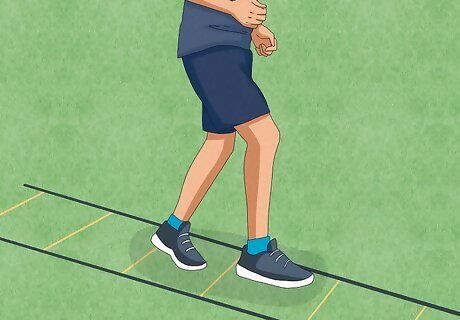
Condition yourself for strength. Being explosive will be crucial. If you want to be able to juke you want to have fast feet. Which mean you should train with a agility ladder and, use a jump rope, and do jumping. Being explosive is very important because it is the ability of how fast you can reach a max speed or strength. Running backs, who are often responsible for running the ball up the field and thus get many opportunities to juke, often have a workout routine that includes plenty of core and lower body exercises, like squats, deadlifts, crunches, and hip exercises. In addition, shoulder and chest exercises can improve your ability to perform stiff arms and shake tackles. As with all forms of strength training, proper form and technique during football conditioning is vital for preventing injury in the workout room and on the gridiron. Be sure you understand all strength training exercise before you attempt them and start with low weights until you master proper technique. If you have one available to you, consult a trainer for advice if you're unsure of what to do.
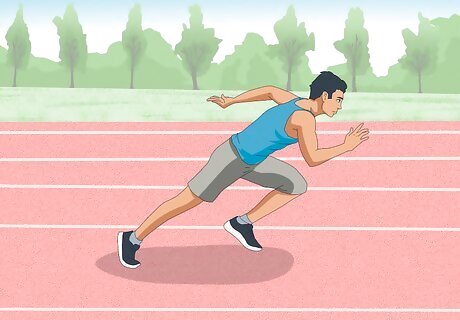
Condition yourself for speed. Speed and agility are important not just for performing quick jukes but also for completing successful plays and moving the ball up the field after your juke. The faster you are, the further up the field you'll be able to get before you even need to juke and the quicker you'll be to capitalize on a defender's mistake when you're trying to get around him. Increase your speed on the field with a smart, speed-focused exercise regimen to become the best juker you can be. To improve their speed and agility, running backs often incorporate sprints into their exercise routines. As a simple sprinting exercise, try the "sprint ladder". Start out by sprinting 10 yards (9.1 m) down the field, turning, and sprinting 10 yards (9.1 m) back as fast as you can. Rest for 30 seconds, then sprint 20 yards (18.3 m), turn, and sprint back. Rest for 30 seconds again, then repeat for 30, 40, and 50 yards (45.7 m), resting for 30 seconds between each sprint. One great way to measure your improvement when doing speed training is to time yourself. Using a stopwatch to keep track of the time it takes you to complete your sprints lets you track your progress and can encourage you to push extra hard to shave seconds off of your record times.
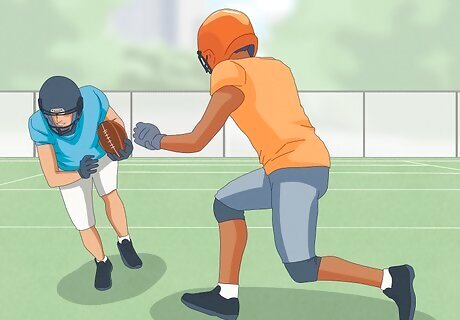
Improve your reflexes. In the chaos of an important running play, the ball handler's reaction speed can be the difference between a loss of yards, a minor gain, and a touchdown run. Juking against a skilled defender requires you to read minor signs in your opponent's body language, judge his intentions, and get around him before he has a chance to react, sometimes all in less than a second. The sharper your reflexes are, the quicker you'll be able to react to your defender, which can give you a huge advantage. One great way to improve your juking reflexes is simply to practice juking against a reasonably experienced defender. For instance, you might try simply squaring off against a friend in an empty field and trying to run the ball past him without letting him touch you. Doing this lets you practice reading your opponent and getting familiar with various juking methods in addition to putting your fast-twitch reflexes to the test. For extra practice, try facing off against two or more friends lined up at different points down the field.
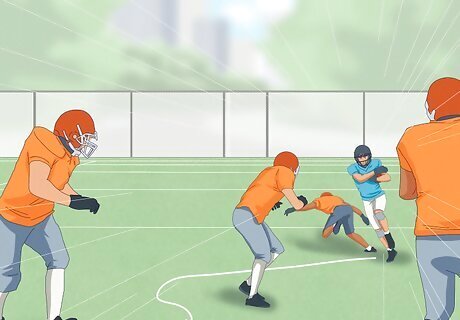
Learn to read openings. A ball carrier should never try to go around or through a defender when he has an equally open path that's unguarded. Most offensive running plays are designed to open up gaps (or "holes) in the defense's formation to give runners easy pathways to run for yards. Whenever possible, try to exploit these holes in the arrangement of the defensive players. The best runners are always looking for defensive holes to run through, especially after jukes, when the arrangement of defensive players may have shifted. To notice holes in the defense, you'll need to be sure to keep your head up and your eyes on the field ahead of you whenever you're running with the ball. Good situational awareness is important for any football player, especially one tasked with advancing the ball. It can also be helpful to go over game footage with the guidance of an experienced player or coach. Having a bird's eye view of the action during a game allows you see how defensive holes form and how offensive players can exploit them with proper strategy.

Study the greats. Football has no shortage of role models when it comes to great jukers. Studying the fancy footwork of your favorite running back or quarterback is a great way to see world-class strength and agility in action. Additionally, watching professional football players can expose you to new juking strategies that wouldn't have been introduced to introduced to otherwise and give you high-water marks for excellence to shoot for. Below are just a few of the all-time greats when it comes to agility on the gridiron: Walter Payton: Nicknamed "Sweetness" for the way he seemed to effortlessly dance up and down the field, Payton is considered by some to be the greatest running back of all-time. Payton's speed and agility are legendary, helping him claim the NFL record for all-purpose rushing yards at 21,803. Marcus Allen: Considered one of the best short-yardage NFL runners ever, Allen achieved infamy with a record-breaking 74-yard run in Super Bowl XVIII that started with a fantastic juke. Jim Brown: Brown, who played in the late 50s and early 60s, is now widely regarded as one of the greatest football players in the history of the sport. With an amazing talent for raw physicality, Brown was a serious force to be reckoned with on the field. When he decided to juke rather than simply demolish his defenders, Brown usually left his opponents in the dirt. Bo Jackson: Jackson was known in the 80s and 90s for being one of the fastest players in the NFL. He used his speed to go around people if he could, but could also, if needed, juke. If you are already faster than most opponents, try to use speed more than agility, but learn the basics of agility so that you are always ready for any situation. Some of football's greatest jukers are from the modern era. Players like Reggie Bush, Adrian Peterson, Marshawn Lynch, and many others have made names for themselves as extremely skilled runners at the college or professional level (or both).



















Comments
0 comment